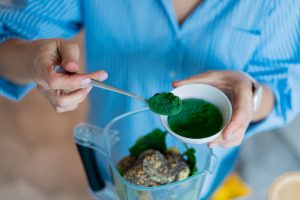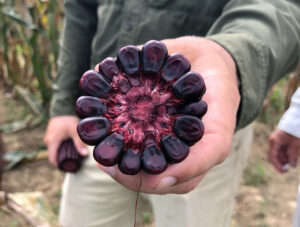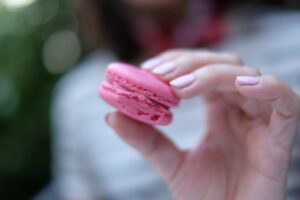California has recently passed a bill that will ban the use of Erythrosine, or FD&C Red No. 3 in foods and beverages. In this article we’ll discuss why the ban matters, and review some of the best natural replacement options for Red No. 3.
How the Ban Affects the Industry
With the incoming Barbie® live action movie and Pantone® picking Viva Magenta as their 2023 color of the year, we have seen an explosion of pinks and fuchsias all over in fashion, visual design, and, of course, the food and beverage industry.
One of the traditional options for achieving these shades is a synthetic dye called Erythrosine, also known as FD&C Red No. 3. However, the California Assembly’s Committee on Environmental Safety and Toxic Materials very recently passed and referred to the State Senate the bill AB418 that would prohibit its use in food products sold in that state, from January 2025.
Similar bills were also introduced by the state of New York (S6055A and A06424), and the dye is already banned or has very limited allowances in food applications in other regions, like in Europe, where it is only permitted to dye processed cherries.
So, what are some natural options for Red No. 3 replacement? How can we achieve such vibrant pink shades with natural colors? In this article, we’ll take you through some of the best natural color options to create these shocking pinks in foods and beverages.
What is Erythrosine?
Erythrosine, or Red No. 3, is petroleum derived dye that gives a perfect Barbie®-like pink shade. Like other synthetic colors, it is heat-stable color, soluble only above pH 4.5 and has poor light stability. Its applications are therefore technically limited to neutral pH and light protected foods.
It creates shades of red that lean to the bluish/violet side of the spectrum. They are super energetic, fresh, and dynamic, and tend to appeal young consumers. That is why they are popular color choices for confections, baked goods, cereals, and other indulgent foods targeted at that demographic. But there are a few natural options that can create an awesome shade of pink, allowing for manufacturers to replace erythrosine using natural color sources.
Natural Replacement Options
1. Carmine
Our first Red No. 3 replacement option is Carmine. Carmine offers a precise combination of neutral pH solubility and heat stability. This nature-derived pigment has a maximum absorption peak at about 520 nm, very close to that of erythrosine (ca. 526 nm in water at pH 7), giving it a similar vibrant shade and excellent heat stability and light stability. Baked goods and neutral sugar pH confections will shine in all splendor with this color choice.

2. Betacyanins
Another excellent option for Red No. 3 replacement are Betacyanins. Betacyanins are a plant-based color solution for manufacturers needing an color that complies with vegan or Kosher claims.
Beet roots are rich in a pigment called betacyanin, a bluish pink color that is also very similar to that coveted Barbie®-like pink. While normally red beet is not recommended for heat processed foods, they present improved stability in systems with very low water activity like the case of sugar confections.
If the food product is inherently subjected to intense heating processes like baking or extruding, there are other options for color application. Alternative options include staining the surface, using glazes, or using a colored syrup to coat the final piece. Beet root juice is also an awesome option for dry mixes of instant beverages and protein shakes, and for ice creams and water ices.
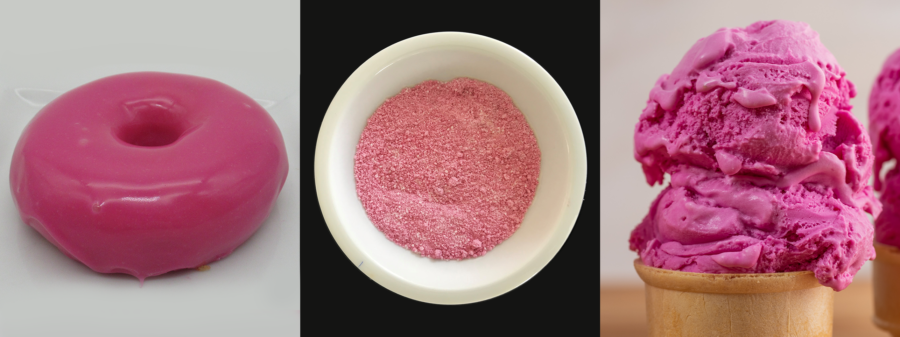
3. Anthocyanins
The last Red No. 3 replacement option that we’ll review are anthocyanins. The anthocyanins family are a brilliant source for pink/fuchsia shades in several applications. This group of pigments is sourced from a variety of fruits and vegetables.
Anthocyanins can give an ample range of red and pink colors in the low pH of the spectrum, and has excellent consumer recognition. Therefore, they widen the possibilities of getting the trendy color in acidic foods and drinks, with the additional advantage of being heat and light stable.
Anthocyanins vary in shade and performance depending on the source, with some of them leaning towards the pinkish/bluish side of the red spectrum like purple sweet potato and red cabbage. Playing with the pH of the matrix and blending sources can help to achieve the exact hue you require in your particular application.
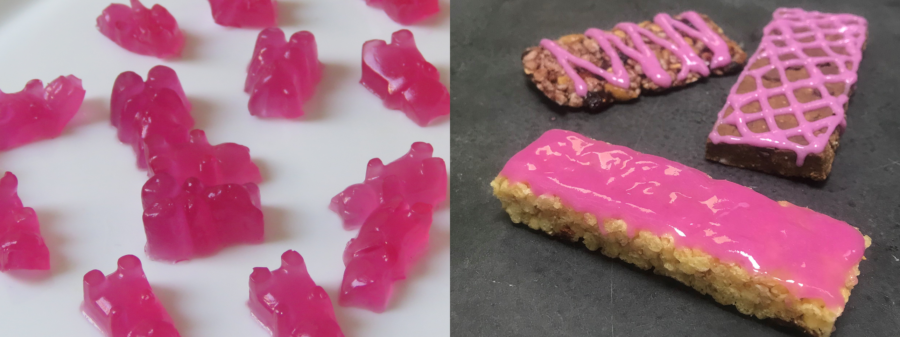
Looking to add create bright pink to magenta shades to your next application? Whether you’re looking to replace erythrosine or just create an on trend application, you can request a sample or contact us to get started on a project.

